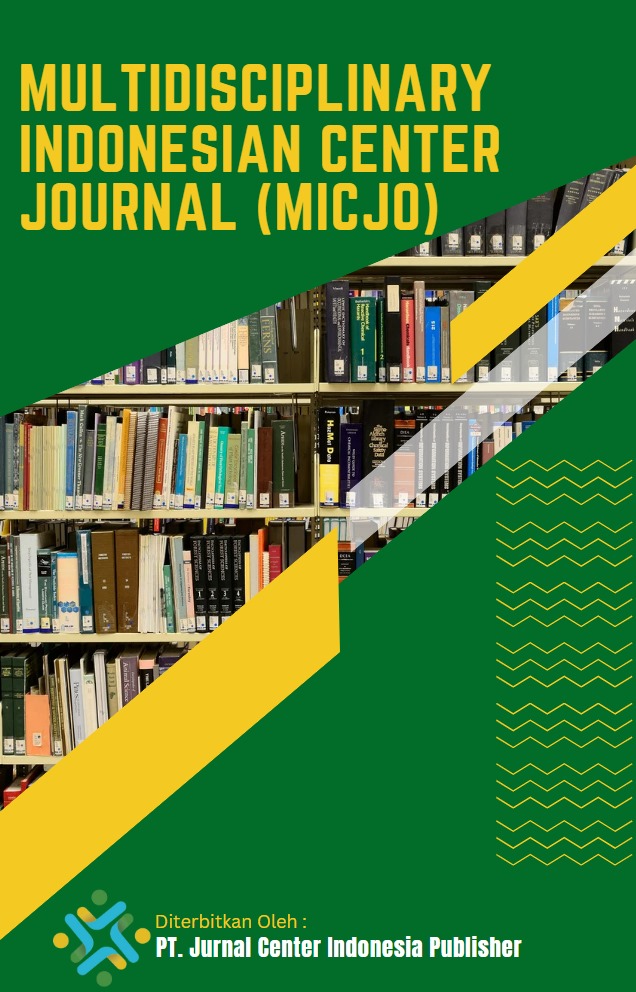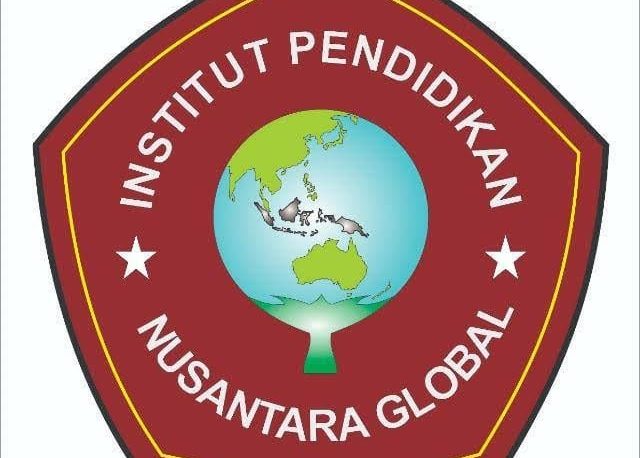BRIDGING DOCUMENTATION GAPS IN ELECTRONIC MEDICAL RECORDS: AN ANALYSIS OF INCOMPLETE MEDICAL ASSESSMENTS AND THEIR CONSEQUENCES FOR INA-CBGS REIMBUREMENT
DOI:
https://doi.org/10.62567/micjo.v2i4.1475Keywords:
Electronic Medical Records, completeness, medical assessment, INA-CBGs, hospital claimsAbstract
Electronic Medical Records (EMR) are designed to improve service quality, documentation accuracy, and administrative efficiency, including reimbursement through the Indonesian Case-Based Groups (INA-CBGs). However, incomplete medical assessments remain a challenge, potentially leading to service gaps and reduced hospital claims. This qualitative descriptive study was conducted at Dharma Yadnya General Hospital, Denpasar, which has fully implemented EMR since 2024. Data were obtained through in-depth interviews with five informants: two medical record officers, the head of the emergency nursing unit, the head of the inpatient nursing unit, and the head of the medical record department. Data analysis used the 3M framework: Man, Method, and Material. From the Man aspect, heavy workloads of doctors and the lack of administrative support staff often caused delays and incomplete documentation. From the Method aspect, although Standard Operating Procedures (SOPs) and system reminders existed, monitoring relied mainly on manual follow-ups via WhatsApp groups, limiting effectiveness. From the Material aspect, the EMR system was user-friendly and supported by weekly vendor maintenance, but occasional network disruptions and insufficient administrative staff still hampered real-time documentation. Incomplete medical assessments in EMR directly affect INA-CBGs claims, especially when comorbidities, complications, or procedures are not recorded, resulting in under-coding and reduced reimbursement. Strengthening human resources, enforcing SOPs, and improving system support are essential to ensure documentation completeness, service quality, and financial sustainability
Downloads
References
Alharthi, H., Youssef, A., Radwan, S., Al-Muallim, S., & Zainab, A. (2019). Physician satisfaction with electronic medical records in a major Saudi government hospital. *Journal of Taibah University Medical Sciences, 14*(5), 390–396. [https://doi.org/10.1016/j.jtumed.2019.07.001] (https://doi.org/10.1016/j.jtumed.2019.07.001)
Al-Kahtani, N. H., Iqbal, M. S., & Ahmed, M. (2020). Factors influencing physicians’ acceptance of electronic medical records in Saudi hospitals. *Health Information Science and Systems, 8*(1), 1–8. [https://doi.org/10.1007/s13755-020-00116-9](https://doi.org/10.1007/s13755-020-00116-9)
Anselmi, L., Fernandes, C., & Laplane, A. (2021). Hospital reimbursement systems in middle-income countries: Evidence from case-based payments in Brazil. *Health Policy and Planning, 36*(3), 279–289. [https://doi.org/10.1093/heapol/czaa167](https://doi.org/10.1093/heapol/czaa167)
Ashriady, R. (2017). Evaluasi implementasi rekam medis elektronik di rumah sakit. *Jurnal Manajemen Informasi Kesehatan Indonesia, 5*(2), 45–54. [https://doi.org/10.31983/jmiki.v5i2.456](https://doi.org/10.31983/jmiki.v5i2.456)
Cresswell, K., Williams, R., & Sheikh, A. (2020). Using electronic health records for quality improvement in healthcare: Opportunities and challenges. *Journal of the American Medical Informatics Association, 27*(6), 938–941. [https://doi.org/10.1093/jamia/ocaa032](https://doi.org/10.1093/jamia/ocaa032)
Creswell, J. W. (2018). *Qualitative inquiry and research design: Choosing among five approaches* (4th ed.). SAGE Publications.
Damanik, R., & Sitorus, T. (2021). Hubungan kelengkapan rekam medis dengan klaim INA-CBGs di rumah sakit pemerintah. *Jurnal Administrasi Rumah Sakit Indonesia, 7*(1), 33–40. [https://doi.org/10.31219/osf.io/dmsi7](https://doi.org/10.31219/osf.io/dmsi7)
Esmaeilzadeh, P., & Mirzaei, T. (2019). The potential of electronic health records to support primary care practices: A qualitative study. *BMC Medical Informatics and Decision Making, 19*(1), 46. [https://doi.org/10.1186/s12911-019-0777-6](https://doi.org/10.1186/s12911-019-0777-
Ginting, L., & Siregar, R. (2020). Analisis faktor penyebab ketidaklengkapan asesmen medis di rekam medis elektronik. *Jurnal Informasi Kesehatan Nasional, 12*(2), 75–84. [https://doi.org/10.20473/jikn.v12i2.2020](https://doi.org/10.20473/jikn.v12i2.2020)
Huffman, E. K. (2016). *Health information management technology: An applied approach* (5th ed.). AHIMA Press.
Kurniawan, A., & Sugiarto, D. (2019). Pengaruh SOP terhadap kepatuhan pengisian rekam medis elektronik. *Jurnal Administrasi dan Informasi Kesehatan, 6*(2), 41–49. [https://doi.org/10.31219/osf.io/ksd49](https://doi.org/10.31219/osf.io/ksd49)
Nugroho, D., Prasetya, H., & Wulandari, E. (2020). Pengaruh infrastruktur teknologi terhadap efektivitas sistem rekam medis elektronik di rumah sakit daerah. *Jurnal Sistem Informasi Kesehatan Indonesia, 8*(1), 45–52. [https://doi.org/10.31219/osf.io/jb2mw](https://doi.org/10.31219/osf.io/jb2mw)
Putri, A. R. (2021). Evaluasi fitur dan antarmuka sistem rekam medis elektronik terhadap kelengkapan dokumentasi klinis. *Jurnal Manajemen Informasi Kesehatan Indonesia, 9*(2), 67–75. [https://doi.org/10.31983/jmiki.v9i2.2310](https://doi.org/10.31983/jmiki.v9i2.2310)
Purwanto, A. (2022). Faktor-faktor yang mempengaruhi kepatuhan pengisian asesmen medis di rekam medis elektronik. *Jurnal Administrasi Rumah Sakit Indonesia, 8*(1), 55–65. [https://doi.org/10.31219/osf.io/arsm22](https://doi.org/10.31219/osf.io/arsm22)
Rahmawati, D. (2021). Hubungan beban kerja dengan kelengkapan dokumentasi rekam medis elektronik di rumah sakit. *Jurnal Manajemen Informasi Kesehatan Indonesia, 9*(2), 112–120. [https://doi.org/10.31983/jmiki.v9i2.1234](https://doi.org/10.31983/jmiki.v9i2.1234)
Ratri, M. (2022). Efektivitas sistem pengingat otomatis terhadap kelengkapan rekam medis elektronik. *Jurnal Informasi Kesehatan Nasional, 14*(1), 25–34. [https://doi.org/10.20473/jikn.v14i1.2022](https://doi.org/10.20473/jikn.v14i1.2022)
Setiawan, Y. (2022). Kebutuhan SDM non-medis dalam menunjang keberhasilan sistem informasi kesehatan. *Jurnal Administrasi dan Informasi Kesehatan, 7*(1), 33–41. [https://doi.org/10.31219/osf.io/sy4tz](https://doi.org/10.31219/osf.io/sy4tz)
Syahputra, H., & Lubis, Z. (2018). Pengaruh kelengkapan rekam medis terhadap kecepatan klaim INA-CBGs. *Jurnal Ilmiah Perekam dan Informasi Kesehatan Imelda, 3*(1), 11–18. [https://doi.org/10.31219/osf.io/abc45](https://doi.org/10.31219/osf.io/abc45)
World Health Organization. (2020). *WHO guidance on digital health implementation*. WHO Press. [https://www.who.int/publications/i/item/9789240010567](https://www.who.int/publications/i/item/9789240010567)
Yuliana, N., & Pramudyo, H. (2023). Analisis dampak digitalisasi rekam medis terhadap mutu pelayanan dan pembiayaan rumah sakit. *Jurnal Kesehatan Masyarakat Indonesia, 18*(2), 102–110. [https://doi.org/10.31219/osf.io/yz12x](https://doi.org/10.31219/osf.io/yz12x)
Downloads
Published
How to Cite
Issue
Section
License
Copyright (c) 2025 Ika Setya Purwanti, Made Wahyu Aditya

This work is licensed under a Creative Commons Attribution-ShareAlike 4.0 International License.


















